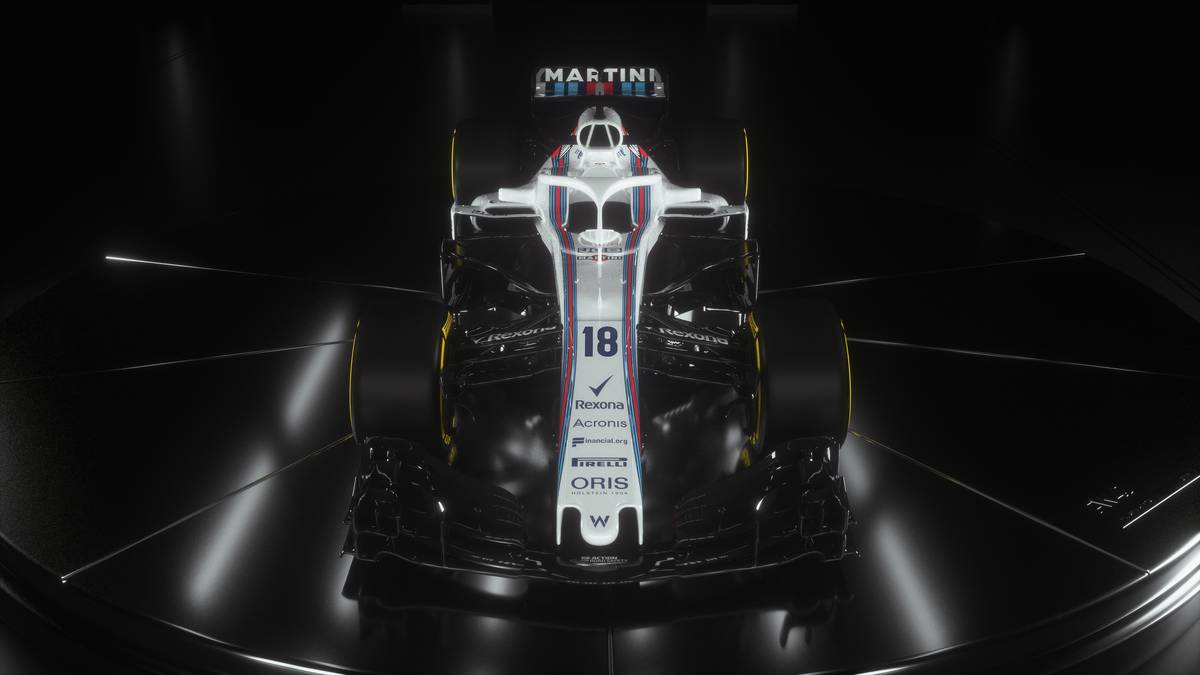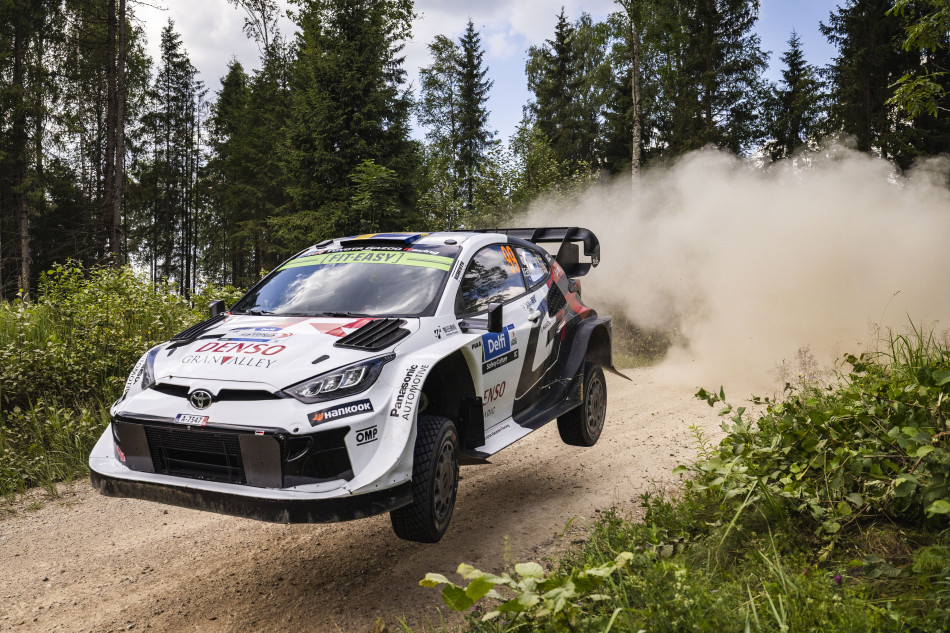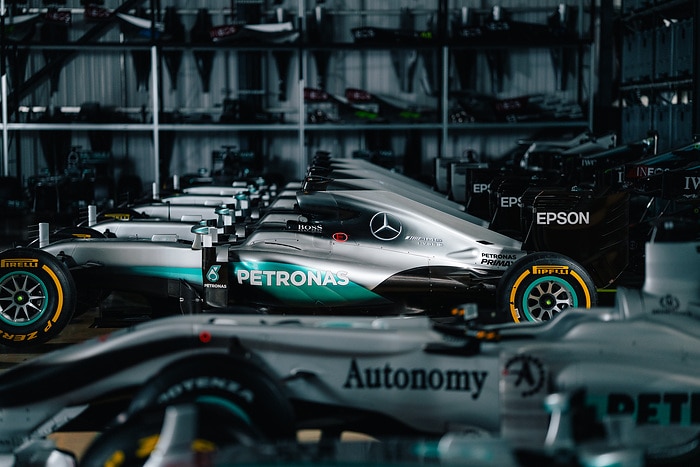
The new for 2018 Formula 1 cars are now being launched and the first of those was that of the HAAS Formula 1 team, closely followed by the Williams, Red Bull, Renault and Sauber launches and then a couple of days later the Mercedes and Ferrari teams and today in England the McLaren team.
The overall look of the cars has drifted, understandably, towards the all-conquering Mercedes style with some Ferrari elements thrown in.
A couple more launches to come and one point of interest to all was just how the best automotive engineers and designers in the world were going to ‘meld’ the so-called ‘Halo’, the ‘cockpit head protection system’, into the car’s design.
One thing that does strike the viewer is that this appendage does not look any better now than it did when first muted.
Advertisement
A bit smoother perhaps, slightly more integrated maybe, colour coded as a form of camouflage and just a little more aerodynamic, yes.
But it is still there. An ugly attachment.
At the Williams launch the Chief Technical Officer of the team, Paddy Lowe, maintained, “I think by the second race nobody will notice it any more”.
An optimistic view I think but the facts are simple.
It is there, it is not going away, we will get used to it (in time perhaps), we will notice it and the concept will eventually trickle down, in various forms, to almost every single seat Formulae under the auspices of the FIA.
One subject that did come under some discussion at the Williams launch was the ‘pay driver’.
Williams deputy team principal Clare Williams was vigorous in her insistence that to call any Formula 1 driver by that name is unfair. She stated “It’s nothing new in F1 that drivers come with money, and thank goodness that they do.”
It is a fair point to make.
It is also difficult to think of a Formula 1 driver who did not, in some form or other, either buy his or her way into a drive or bring substantial money to the team from a sponsor, when otherwise that sponsor would not be part of the team.
Clare Williams was obviously reffering to the Williams team’s driver line up for 2018 with both Lance Stroll and Sergey Sirotkin apparently bringing major, and much needed, funding to the team.
From the ‘gentlemen’ drivers of the 1950s it is a trend as old as Formula 1 itself but one that started to gain real traction in parralel with the sponsorship of Formula 1 cars.
The great three-time world champion Niki Lauda was forced to get a bank loan to buy his way into the now long-defunct BRM team.
That proved to be a reasonable investment by any standards.
The Marlboro cigarette brand financed the careers of multiple drivers and to get the huge support of that company meant a driver had the whip hand in where to take his sack of gold, as long as Marlboro agreed that is.
A few world champions remain grateful to the Philip Morris Tobacco Company. It became almost the fashion for other cigarette companies to associate themselves with young drivers by financing their careers in the hope and expectation of greater things to come.
In more recent years one could choose almost any driver from the grid and point to a sponsor or backer whose funding enabled that driver to get a drive.
The process is achieved in many ways and often involves a driver’s retainer. Once again Marlboro is famous, to this day, for giving backing to a team, in large part by taking care of the drivers’ substantial pay packet, something that McLaren’s Ron Dennis did with great effect in order to employ the best drivers available and that practice is still in effect today at Scuderia Ferrari.
When Fernando Alonso joined the McLaren team he was closely followed by long time Spanish sponsor Santander, as was the case when Alonso joined Ferrari. Sergio Perez joined the Force India team in 2014 with the huge aid of Mexican telecommunications company Telmex, owned by one of the world’s richest men Carlos Slim, a long time backer of Perez and other Mexican drivers. Telmex sponsors Force India.
The erratic and unpredictable Pastor Maldonado eased his way into Formula 1 by way of assistance from the Venezualen Government and the oil company, PDVSA and some US$50 million. Maldonado was a friend of the late Venezuela president, Hugo Chávez.
So, the ‘pay driver’ syndrome is not a new one but it goes some way in explaining why so many drivers of undoubted talent never quite make it to the very top rung of the ladder.
There are many talented drivers but few with the ability to use another party’s bank account.
If the right door opens at the right time a Formula 1 team’s driver development arm may spot a potential champion.
The Red Bull programme is famous, perhaps infamous, for doing that and their latest ‘young’ protege Brendon Hartley has eventually benefitted from the association. Palmerston North is bereft of billionaires who want to support our young drivers with untold millions of investment dollars.
The McLaren team picked up a young, and financially struggling, Lewis Hamilton and now the Ferrari Driver Academy is looking after the career, among others, of Kiwi Marcus Armstrong.
Having a Formula 1 ‘sugar daddy’ tucked away is all very well but to get into the top echelon one thing always rules.
That is talent.
It doesn’t matter how much you can bring to the table, if you don’t have talent your seat at that table will be brief indeed.
Source :nzherald.co.nz






















